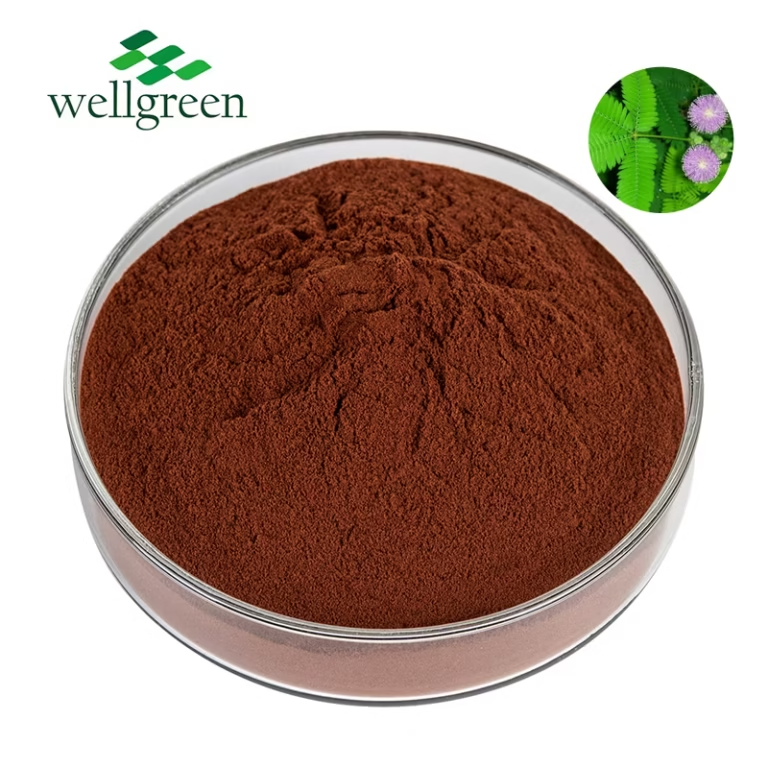
The ethnobotanical exploration of the Amazonian plant reveals a rich tapestry of traditional knowledge and cultural practices. For centuries, indigenous communities have utilized various parts of this remarkable plant, specifically its root bark, for a multitude of purposes ranging from medicinal remedies to spiritual rituals.
- Local healers have long employed Mimosa Hostilis to address a wide spectrum such as respiratory issues.
- Additionally, the plant's psychoactive properties have been appreciated in certain cultural contexts, leading to its use in ceremonial practices .
Recent scientific investigations have begun to uncover the medicinal properties responsible for Mimosa Hostilis's purported effects. This ongoing research promises to expand our insights into this ethnobotanically significant plant and its potential applications.
Exploring the Chemical Potential of Mimosa Hostilis
Mimosa hostilis, a remarkable plant native to the tropical regions of the world, has captured significant scrutiny in recent years. This seemingly species possesses a trove of chemical substances with a broad range of potential applications. From traditional medicinal practices to modern scientific, the exploration of Mimosa hostilis's organic profile continues at an rapid pace.
However, much remains to be understood about the full scope of its potential. Researchers are actively delving into its remarkable chemical constitution to leverage its benefits for the betterment of human health and well-being.
Traditional and Modern Uses of Mimosa Hostilis Bark Bark
Mimosa hostilis bark has been utilized in various traditional ceremonies customs for centuries. Tribal communities often employed it as a potent component in spiritual ceremonies. Traditionally, the bark was used to induce altered states of consciousness, promoting connection with the divine.
Modernly, mimosa hostilis bark has gained popularity for its potential therapeutic benefits. Researchers are investigating its substances for their possible pain-relieving properties. The extract is often used in cosmetics products due to its antioxidant effects.
Furthermore, mimosa hostilis bark contains unique alkaloids that some individuals utilize for their psychoactive effects. It is crucial to note that the ingestion of mimosa hostilis bark should be approached with awareness. Consulting a qualified medical professional is essential to understand potential risks and interactions.
A Deep Dive into the Pharmacology of Mimosa Hostilis
Mimosa hostilis, a shrubby plant native to the Americas, has garnered considerable attention in recent years for its chemical properties. The key factor responsible for these effects is copyright, a potent altered-state compound found in various indigenous cultures for spiritual purposes.
This in-depth review aims to explore the pharmacology of Mimosa hostilis, encompassing its interactions on the human system, potential therapeutic applications, and associated concerns. By summarizing current data, this review offers a in-depth understanding of the complex mechanisms underlying the pharmacological potential of Mimosa hostilis.
- Furthermore, this review will shed light on the cultural significance of Mimosa hostilis within indigenous communities, providing a holistic perspective on its role.
- Concisely, this review serves as a valuable resource for researchers, healthcare professionals, and individuals desiring to gain a deeper understanding of the pharmacology of Mimosa hostilis.
Mimosa Hostilis: Ethnomedicinal Applications and Safety Considerations
Mimosa hostilis, a shrub indigenous to central America, has been widely utilized in ethnomedicine for its more info potent properties. Indigenous cultures harness the bark and root of this plant to alleviate a variety of ailments, including inflammation. While promising results indicate its efficacy in treating these disorders, it's crucial to consider the potential safety concerns associated with its use.
- Ingestion of M. hostilis should be approached with care due to its high concentration of alkaloids, particularly harmala.
- Combinations between M. hostilis and other medications can arise, potentially leading to undesirable outcomes.
- Guidance with a qualified healthcare professional is highly recommended before incorporating M. hostilis into any health regimen.
Cultivation and Harvesting of Mimosa Hostilis for Sustainable Practices
Cultivating Acacia hostilis responsibly requires a deep understanding of its individual needs. Farmers should aim to create a optimal growing environment that provides adequate exposure, well-drained soil, and ideal moisture levels. Indigenous knowledge about the species' preferences can be a valuable guide for cultivating vigorous plants.
Harvesting Mimosa tenuiflora should be conducted sustainably to ensure the long-term health of the plant population. Cultivators should select mature plants and extract only the needed parts. Reducing damage to the plant during harvesting is crucial for growth.
Ethical harvesting practices include rotating harvest sites, preventing over-harvesting, and implementing methods that encourage plant renewal. By adhering to these principles, practitioners can ensure the continued availability of Mimosa hostilis for generations to come.
